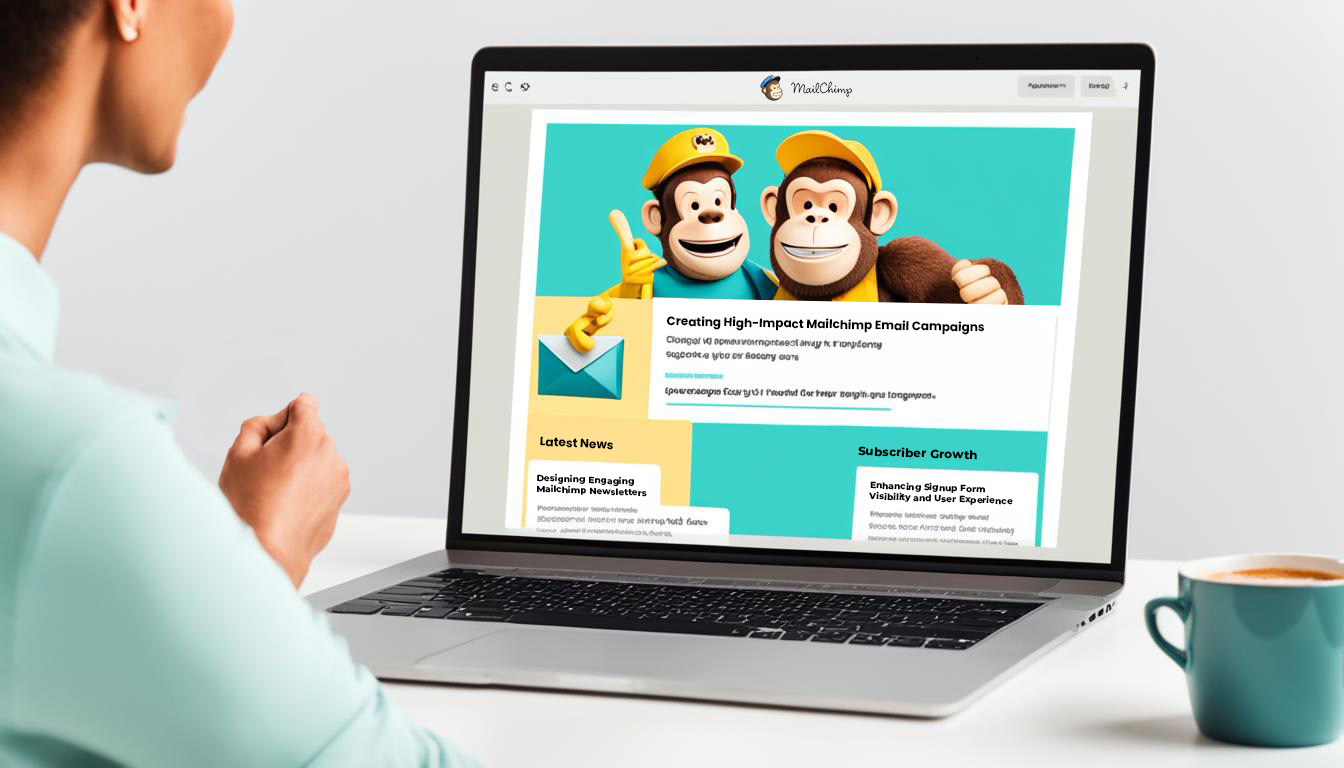Introduction
Welcome to the futuristic world of digital marketing in 2024 where constant evolution is the norm and staying ahead of the curve is critical. Why is this so important? Because digital marketing is no longer just an add-on to a business’s promotional efforts – it’s the lifeblood that fuels growth and fosters customer relationships. Yet, many businesses are stumbling in their digital journeys, falling prey to common digital marketing mistakes.
Are you satisfied with your digital marketing results? If not, this article might be the wake-up call you need. Our aim? To help you navigate through the minefield of common pitfalls and equip you with practical tips to avoid them.
But why should you listen to us? As the team behind Derail Logic, we’ve been delivering innovative web design and marketing services since our tech support days. Our passion for creativity, fresh perspectives, and high standards drive us to help businesses like yours succeed in the digital landscape.
In this article, we will go beyond just listing down these mistakes. We will delve into each one, highlighting why they can be detrimental to your online success, and provide actionable strategies for overcoming them. Whether you’re a seasoned digital marketer or a novice dipping your toes into the digital realm, there’s something here for everyone.
So let’s dive in and uncover these common digital marketing mistakes that could be holding back your business growth in 2024! And remember, evolving in digital marketing doesn’t mean chasing every new trend; it’s about making informed decisions that align with your business objectives.
To start off, let’s explore how you can unlock growth with automation tools, which can revolutionize your digital strategy by streamlining processes and improving efficiency.
Additionally, we’ll discuss how you can boost your reach with email marketing, a cost-effective and highly targeted approach to engaging with your audience.
1. Starting Digital Marketing Without a Clear Strategy
Starting digital marketing without a strategy – sounds like setting off on a road trip without a map, doesn’t it? A recipe for getting lost, missing opportunities, and wasting precious resources. Just as you wouldn’t embark on a journey without knowing your destination and route, launching your digital marketing efforts without a clear plan is a common pitfall that can derail your business’s success.
Let’s put this into perspective. Imagine you have just launched an exciting new product. You’re eager to promote it online and start posting randomly across various platforms. But why isn’t there any significant increase in sales or website traffic? The mistake lies in not having a solid digital marketing strategy.
A lack of digital marketing strategy means you risk spreading yourself too thin across multiple channels, targeting the wrong audience, or conveying inconsistent brand messages.
So how do we avoid this pitfall? Here’s a step-by-step guide to developing an effective digital marketing strategy:
- Research: Understand your target audience, their needs, preferences, and the platforms they frequent.
- Goal-setting: Define clear, measurable objectives aligned with your overall business goals.
- Channel selection: Choose the most suitable digital platforms based on your audience research and business goals.
Remember that no strategy is set in stone! The dynamic nature of the digital landscape necessitates flexibility and continuous optimization. Monitor your performance, learn from your results, adjust your tactics accordingly – and most importantly – don’t be afraid to experiment! For small businesses looking to craft effective digital strategies, here are some insights that might prove helpful.
2. Failing to Differentiate from the Competition
In the bustling digital marketplace of 2024, standing out is not a luxury—it’s a necessity. Failing to differentiate from competition can be an express ticket to obscurity. It’s like trying to shout over the roar of a waterfall; without a distinctive voice, you’ll likely go unheard.
So, why do some companies become wallflowers in this digital dance?
Common Reasons for Failing to Differentiate
Lack of Unique Value Proposition (UVP)
If your offering is indistinguishable from your competitors’, why should customers pick you? A UVP gives customers a compelling reason to choose your products or services.
Poor Branding
Your brand isn’t just your logo and tagline—it’s the overall impression customers form about your business based on every interaction they have with you. Inconsistent or unappealing branding can confuse or even repel potential customers.
How to Overcome These Challenges
Now that we’ve identified common stumbling blocks let’s explore how to vault over them:
- Niche Targeting: Find a specific demographic underserved by your competitors and tailor your marketing efforts to meet its unique needs and desires. This not only helps you stand out but also fosters deep connections with your target audience.
- Storytelling: Stories resonate with people on an emotional level, making them more memorable and impactful than bare facts or statistics. Use storytelling to convey your brand’s values, mission, and personality in a way that engages and moves your audience.
- Innovation: Whether it’s groundbreaking technology, a novel business model, or even just a fresh take on customer service, innovation can help distinguish your brand from the rest.
Remember—standing out in digital marketing isn’t about being louder; it’s about being different in ways that matter to your customers.
3. Neglecting Social Media Engagement
Are we forgetting something important here? Yes, the power of social media interactions! In the digital landscape of 2024, social media platforms like Facebook, Instagram, LinkedIn, and Twitter have transformed from mere networking sites to vital channels for customer engagement and relationship-building.
Let’s set the stage with a typical scenario: A business is so engrossed in promoting its products or services on social media that it forgets to engage with its audience on a personal level. The result? A dwindling follower count, disengaged users, and a severe hit to brand loyalty.
So, what’s the catch? It’s all about balance. Surely, you’ve got something great to sell. But remember that overselling on social media can be just as detrimental as ignoring social media interactions altogether. People crave genuine interactions, not constant sales pitches.
Here are some practical tips to foster meaningful conversations and build a community on social media:
- Ask Questions: Encourage your followers to share their thoughts and experiences.
- Share User-Generated Content: This not only validates customer experiences but also adds a personal touch.
- Go Live: Use live sessions to connect with your audience in real-time.
Why is this so important? Active engagement on social media significantly boosts your brand visibility and loyalty. It tells your customers that you value their input and views. And it says to potential clients that you’re more than just another faceless corporation – you’re a brand that prioritizes genuine connections.
Remember: Social media isn’t just about broadcasting messages. It’s about sparking conversations, nurturing relationships, and building a community around your brand.
4. Lacking Creative Content and Tracking the Wrong Metrics
Unleash Creativity, Capture Attention
Picture this: A sea of generic content, drowning in a pool of uniformity. Your audience is adrift, seeking a beacon to guide them through the monotony. So, what’s your move? Are you going to serve up more bland writing and generic visuals? Or are you going to be that beacon? The importance of compelling, relevant content in capturing audience attention and driving results in digital campaigns cannot be overstated.
In the bustling bazaar of digital marketing, your content is your currency. It has the power to captivate audiences, stimulate engagement, and ultimately convert casual browsers into loyal customers. Yet, a common pitfall many businesses stumble into is underestimating the detrimental impact lackluster content can have on audience engagement.
Metrics That Matter
Just as critical as crafting creative content is ensuring you’re tracking the right metrics. Many marketers often fall into the seductive trap of vanity metrics – those flashy numbers that look good on paper but provide little actionable insight.
What’s the point of boasting about having thousands of page views if none of them are converting into sales or leads? Have you found yourself chasing after likes or shares, while ignoring other crucial factors like average time spent on site or bounce rate?
The truth? You need to align metrics with business objectives. This means selecting KPIs (Key Performance Indicators) that reflect genuine progress towards your goals.
Here’s how:
- Define Your Goals: These could range from increasing brand awareness to boosting website traffic or improving lead conversion rates.
- Identify Relevant KPIs: Each goal will have its own set of performance indicators – for example, brand awareness might be tracked via social media mentions while lead conversions could be measured by looking at form fills on your landing pages.
- Monitor & Adjust: Keep a close eye on your KPIs, and don’t be afraid to adjust your strategy if things aren’t working out.
Remember, your journey through the digital landscape is unique. Your compass should be too!
5. Failing to Adapt to New Technologies and Trends
As the digital world changes rapidly, it’s crucial to pay attention to digital marketing trends 2024. What worked before may no longer be effective today. In this fast-paced environment, being able to adapt to marketing changes is not just important; it’s necessary for survival.
Why is it important to adapt?
There are several reasons why adapting to new technologies and trends is crucial:
- Rapid Pace of Technological Advancements: New apps, platforms, and algorithm updates are constantly being introduced. If you’re not keeping up, you might miss out on opportunities that could significantly boost your brand’s visibility.
- Staying Updated with Marketing Trends: The key is to stay informed about the latest developments in your industry. Subscribe to reputable tech blogs, listen to marketing podcasts, and connect with innovative thinkers. This way, you’ll always be one step ahead and know what’s on the horizon.
- Risks of Sticking to Outdated Strategies: Holding onto outdated methods is like using a horse in a Formula One race—it simply won’t work. By refusing to adapt, you not only fall behind but also become irrelevant in the eyes of your target audience.
- Embrace Continuous Learning: Learning should be a lifelong journey without an endpoint. Take advantage of webinars, online courses, and workshops to expand your knowledge. This will help you generate fresh ideas and develop strategies that resonate with today’s consumers.
- Experimentation with New Tools and Platforms: Trying out new things can be intimidating, but it’s also where innovation happens! Don’t be afraid to test unfamiliar platforms and tools; some may turn out to be perfect for your needs while others may not work as well. The important thing is that you’re willing to explore and learn from the experience.
The Importance of Adapting in 2024
Adapting to new technologies and trends is not just a choice; it’s a necessity for thriving in the digital landscape of 2024. By continuously innovating and adjusting your strategies, you can position your business as a leader in your industry and leverage the power of cutting-edge digital marketing techniques to drive growth.
6. Poor Investment in Digital Marketing Skills
Investing in digital marketing education is not a luxury, but a quintessential need for businesses in 2024. Why? Because the digital world is constantly changing, fast-paced, and difficult to navigate without the right skills.
The Consequences of a Skills Gap
Imagine this: your digital marketing team doesn’t have the necessary skills to keep up with new trends. They don’t know about the latest SEO techniques or how to leverage AI in creating content. What happens next? Your marketing efforts may become less effective, you could lose your competitive advantage, and ultimately, it could impact your profits. This clearly illustrates the negative effects of a skills gap.
How to Bridge the Gap
So what can you do to bridge this gap and ensure your team is equipped with the right skills? Here are some steps you can take:
- Encourage continuous learning: Create an environment that promotes curiosity and innovation. Encourage your team members to always be eager for knowledge and stay updated on industry trends.
- Invest in professional development programs: Consider enrolling your team in online courses or workshops offered by platforms like Coursera and Udemy. These platforms provide a wide range of courses on digital marketing strategies and tactics.
- Attend webinars and conferences: Make it a habit for your team to participate in webinars and industry conferences regularly. This will give them the opportunity to learn from industry leaders and innovators, gaining valuable insights.
- Follow reputable digital marketing blogs: Subscribe to newsletters from leading digital marketing blogs such as Moz, Search Engine Journal, or our very own Derail Logic blog. These blogs often share fresh perspectives and expert advice that can help your team stay informed.
Remember, the skills of your team are not just valuable assets but also crucial for the success of your digital strategy. So make sure you prioritize continuous learning and upskilling efforts!
Note: In the next section, we’ll be discussing another common mistake – Ignoring the importance of analytics.
7. Ignoring the Importance of Analytics

Why is marketing analytics so important in the digital world? It’s simple. Analytics helps us understand customer journeys, measure campaign effectiveness, and make smart financial decisions. Not using analytics is like sailing through a storm without a compass—dangerous and unwise.
Many companies have access to a wealth of data but struggle to gain meaningful insights from it. Why does this happen? Often, it’s because of mistakes made in digital marketing analytics, such as collecting data without a clear purpose or failing to take action based on the information gathered. Here’s the truth—data is more than just numbers; it holds valuable stories that can guide our decision-making.
So, what are the consequences for businesses that ignore analytics?
1. Customer Engagement Insights
Who are your most loyal customers? What type of content resonates with them? Without using analytics in your digital marketing efforts, understanding these preferences becomes nothing more than guesswork.
2. Website Traffic Trends
Where are your website visitors coming from? Which pages are they spending the most time on? Analytics, such as Google Analytics, can provide you with valuable information about user behavior and help you optimize your site accordingly.
3. Campaign Performance
Which advertisements are driving conversions? What kind of emails are getting opened? Ignoring these metrics could result in wasted resources on ineffective tactics.
4. Resource Allocation
Are you investing your budget in the right areas? Which marketing channels are delivering the highest return on investment (ROI)? Analytics can guide you in making informed decisions about where to allocate your resources for maximum impact.
The key is to approach analytics in a systematic manner—establish clear objectives, identify relevant metrics, analyze data thoroughly, and make adjustments promptly based on insights gained. It’s important to remember that data alone cannot solve problems; its true value lies in how we interpret it and apply it to our strategies.
Businesses need to make analytics an integral part of their decision-making process, using it to transform raw numbers into actionable plans that resonate with their target audiences and drive success. Without analytics, you’re simply taking shots in the dark and hoping for the best. But with analytics, every move is calculated, every decision is informed—a reliable way to stay ahead of the competition and win over customers.
Are you ready to take your marketing campaigns to the next level with precision and insight? Let’s harness the power of analytics together and turn information into triumph.
Conclusion
As we navigate the digital world of 2024, it’s clear that avoiding digital marketing mistakes is not just a choice, but a must for survival. We’ve looked at seven common pitfalls, each one capable of blocking your path to successful digital marketing in 2024.
But don’t let these challenges discourage you. Instead, see them as chances to grow and learn.
“Opportunities don’t happen. You create them.” – Chris Grosser
What’s Next?
The decision is yours. It’s time to examine your own digital strategies.
- Are you diving into digital marketing without a clear plan?
- Does your brand struggle to differentiate itself from the competition?
- Are you falling short when it comes to engaging on social media or creating content?
- Has your business failed to adjust to new trends or invest in crucial skills?
- Are you ignoring the valuable insights that analytics can provide?
If any of these questions resonate with you, remember that it’s never too late to change direction. Taking proactive measures can help steer the course towards success.
“It does not matter how slowly you go, as long as you do not stop.” – Confucius
Key Takeaways
Here are the key lessons we’ve learned:
- Strategy is Key: Having a well-defined digital marketing strategy is crucial for success.
- Differentiate or Disappear: Find unique ways to stand out from your competitors.
- Engagement Matters: Focus on building meaningful connections with your audience through social media and compelling content.
- Stay Agile: Be adaptable and embrace new trends and technologies.
- Data-Driven Decision Making: Leverage analytics to gain insights and make informed choices.
Remember, achieving greatness in this ever-changing field requires more than just avoiding mistakes. It requires a mindset that is always ready to learn, experiment, and adapt. Embrace change wholeheartedly, making sure that creativity and passion are at the core of everything you do.
Let’s confidently move forward into the future together, harnessing the power of digital marketing to its maximum potential in 2024 and beyond.




